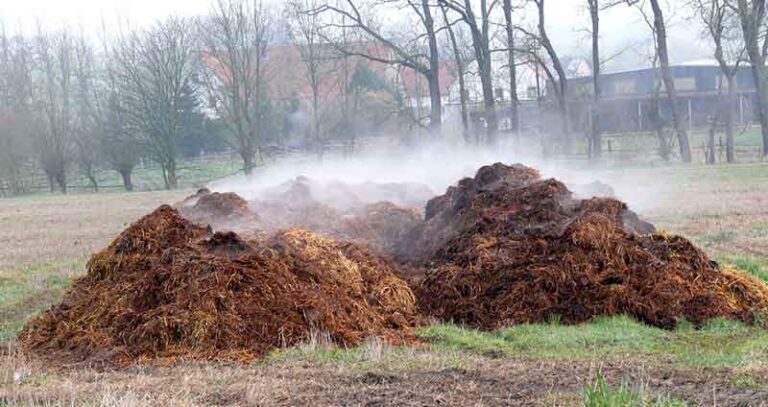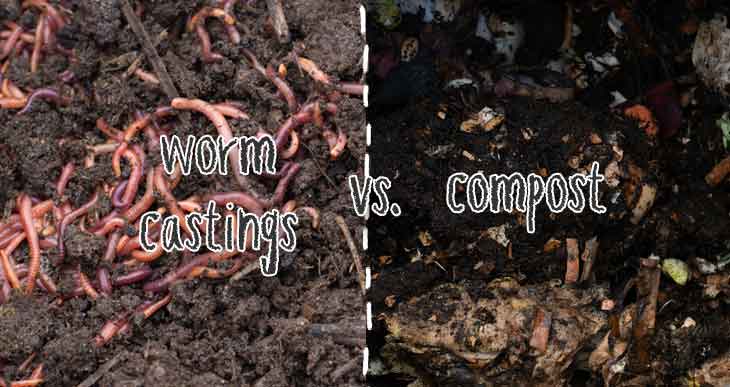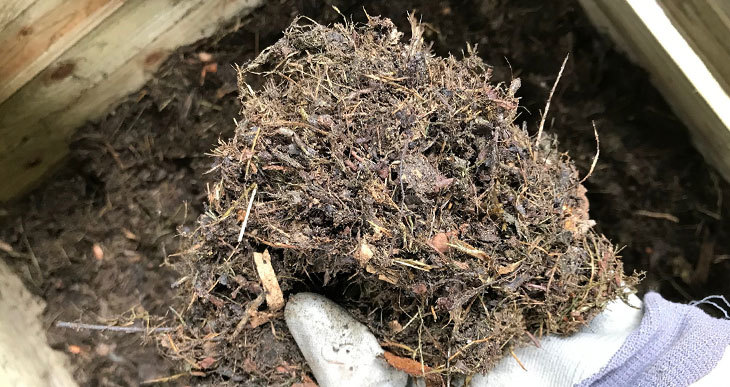Hot Compost Vs. Cold Compost (Which Is Better?)
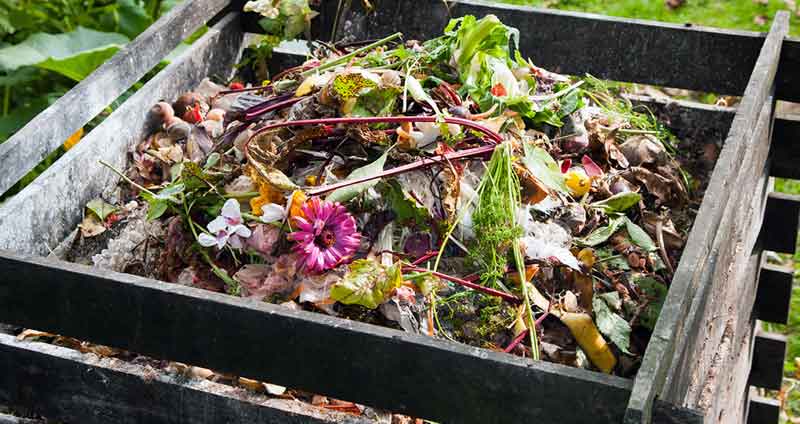
Hot and cold compost are opposites in more than name.
Actually, these composting methods are opposites in almost all ways.
So what do they have in common?
They both make compost! Plus, they both have upsides and downsides.
I’ll break down the perks and pitfalls of these very different methods to help you decide whether you’d like to make your compost the hot or cold way.
What’s The Difference Between Cold And Hot Compost?
Hot composting is an aerobic (with oxygen) process whereby oxygen-needing microorganisms use heat to rapidly decompose organic wastes. In contrast, cold composting is an anaerobic (without oxygen) process when microorganisms that don’t need oxygen to live slowly ferment organic wastes.
The biggest differences between hot and cold composting are that hot composting is fast and high-maintenance. Cold composting is slow and low-maintenance. So, one method will give you quick results in return for some slog, and the other will let you take it easy while you wait for results.
Both methods have several other pros and cons. Let’s unearth the good and bad of hot and cold composting.
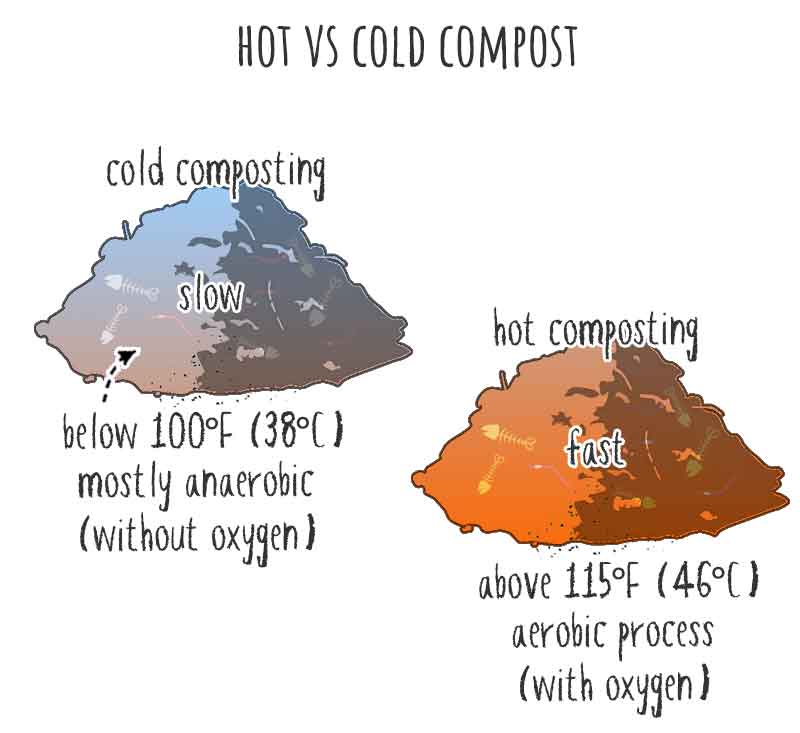
Hot Composting Definition
Hot composting is a method that controls the composting conditions to increase the rate at which organic wastes decay. When the conditions are right, oxygen-needing microorganisms break down the wastes, creating heat. The temperatures in a pile then rise, getting as hot as 160°F (71°C).
These high temperatures help organic wastes break down quickly. There are 6 rules for successful hot composting:
Rule # 1: Balance the nitrogen-rich greens and carbon-rich browns in your compost pile.
A ratio of 1:1 should kickstart the decomposition. Once the compost’s cooking, you could add more browns to the mix, making the brown to green ratio closer to 2 parts greens to 3 parts browns.
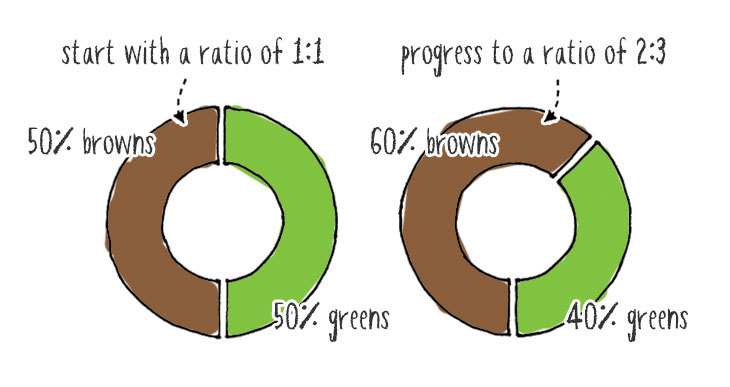
Rule # 2: Cut large organic wastes into smaller pieces.
Try to get the pieces to about half an inch to 1.5 inches. This increases the surface area for organisms to work on and makes the process quicker.
Rule # 3: Build a pile that’s at least 3-feet high, 3-feet long, and 3-feet wide.
If you feel you could manage a bigger pile, build it to 4 x 4 x 4 feet – or bigger!
Rule # 4: Keep the compost’s moisture level between 40 and 60%.
Use a compost moisture meter to monitor levels or grab handfuls of compost from around the pile and squeeze them to check they have about as much moisture as a sponge that’s been wrung out. (Amazon link)
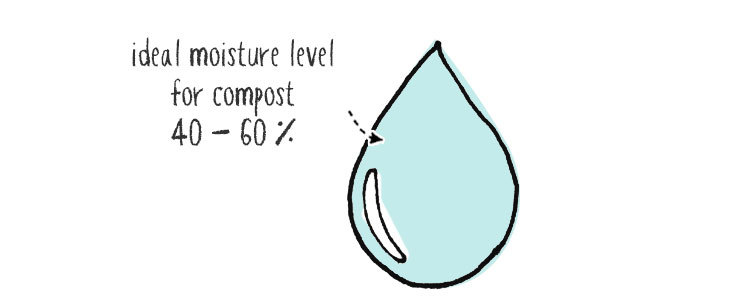
Rule # 5: Track your compost’s temperature.
Ensure your compost gets into the hot zone (about 130 to 140°F / 54-60°C) for speedy results and weed-killing power. Check the temperature with a compost thermometer. (Amazon)
Rule # 6: Regularly turn the pile.
This will keep air flowing and temperatures consistent throughout the pile. The ideal time is when the temperature reaches 160°F(71°C). By doing this, you can introduce oxygen at the critical moment when oxygen levels are depleted.
Follow these hot composting commandments, and you’ll set the scene for composting organisms to work quickly to break down your garden wastes and kitchen scraps.
Benefits Of Hot Compost
Hot composting has a lot going for it. Here are its most noticeable benefits:
- Hot compost gives fast results. This perk hooks most gardeners on hot composting – why wait up to 2 years for your compost when you can have it in as few as 3 weeks. You can generally expect hot compost to be ready within 4 weeks. However, some recipes, like the Berkeley Rapid Composting Method, claim you can have it in 2 to 3 weeks.
- Hot compost destroys weeds, their seeds, and disease-triggering organisms. Temperatures of around 145 to 160°F (62-71°C) kill most types of weeds and undesirable organisms in compost.
- Hot compost has a pleasant smell. Suppose you’ve come across a smelly compost pile. In that case, you’ll know the rewarding feeling of having a pile that smells nice and earthy, like hot compost (in contrast to cold compost, which can smell really bad).
Disadvantages Of Hot Composting
Hot composting also has a few drawbacks. Perhaps these disadvantages will make you rethink whether it’s the perfect composting method for you:
- Hot composting takes lots of work. There’s quite a long to-do list for keeping hot composting going strong. It’s a high-maintenance method for sure. You need to regularly monitor and adjust the pile.
- You need to make your hot compost pile big enough to generate heat. That’s a recommended minimum of 3x3x3 feet.
- Hot composting works best if you make it in one go. You should build your whole hot compost pile at once for top results, which means stockpiling enough organic matter and the right balance of greens to browns before you start.
- Hot composting works best if you make it in batches. Once you’ve built your hot composting pile, you should let it get on with efficient decomposition. Don’t add new organic wastes, as this will slow the decay.
Cold Composting Definition
Cold composting is a relaxed composting method needing minimal involvement from you.
The workers here are microorganisms that don’t need oxygen to survive. So instead, these little guys ferment your organic wastes to break them down.
Cold composting doesn’t have many rules to follow. If you’re keen to keep things carefree, you can throw organic wastes into a pile as you make them, sprinkle water on the pile when it looks like it’s drying out, and wait for the wastes to break down.
Patiently! (It’ll take a while.)
Benefits Of Cold Compost
Here are the top reasons cold composting is worth your attention:
- Cold composting is the easiest method. This method needs low- to zero maintenance. Yep, no turning!
- You choose how big (or small) to make your cold compost pile. There’s no minimum size to get cold composting going.
- You can add new organic wastes to the pile as you make them. Just throw new wastes on top and collect finished compost from the bottom. Bury your kitchen scraps in the middle of the pile to stop them from luring raccoons and rats into your garden.
Disadvantages Of Cold Composting
A handful of drawbacks might put you off cold composting.
- Cold composting is a slow method. You’ll need to wait about a year (or even 2!) for your compost.
- Cold composting doesn’t kill weeds, their seeds, and disease-spreading organisms. Temperatures won’t get hot enough to kill these nasties, so keep weeds and diseased plants out of your cold compost.
- Cold composting smells bad. When organic wastes break down without oxygen, they release quite a stink. (Think: rotten eggs.)
- Cold composting can attract pests. The smells coming from cold compost might turn your stomach, but they make rats’ and raccoons’ mouths water.
Hot Vs. Cold Composting
Here’s a side-by-side comparison to show how hot and cold composting measure up against each other:
Hot Composting | Cold Composting |
Fast process. Compost is ready within a month or 2. | Slow process. Compost can take a year or 2 to finish. |
Needs prep work.Collect the right balance of greens and browns in advance and compost the whole batch in one go. | Doesn’t need prep work.Compost any organic wastes you make as you make them. |
High-maintenance.Regularly check the compost’s moisture level and temperature and turn it over. | Low- to no-maintenance.Leave the organic wastes to decompose on their own, adding water when the compost looks dry. |
Needs a large amount of organic waste.The smallest a pile can be is 3 feet wide, 3 feet high, and 3 feet long. | Effective at any size. Cold compost will work in a pile of any size. |
Aerobic process. Microorganisms that need oxygen to live break down organic wastes. These organisms work faster. | Anaerobic process.Microorganisms that don’t need oxygen to live break down organic wastes. These microbes work slowly to decompose. |
Heat helps decomposition. | Fermentation causes decomposition. |
Temperatures can get high enough to kill weeds and disease-causing organisms. | Temperatures don’t get high enough to kill weeds and disease-causing organisms. |
Smells rich and earthy. | Smells like rotten eggs. |
Is Hot Or Cold Compost Better?
So, which is the compost champion?
- For speed and weed-killing power, hot composting is the winner.
- For ease and convenience, cold composting is tops.
Hot and cold composting have such different strengths that it’s tricky picking an overall winner. So why not combine the two? Perhaps try what’s known as warm composting, a less-demanding method than hot that gives quicker results than cold (with no stink!).
You could build your pile the same way you’d make a hot one, get its moisture to that wrung-out sponge level, and mix everything. Then turn the pile and check its moisture levels every few weeks. This method should make compost in 2 to 4 months.
Have fun!


